'There can be no long-term economic or social development on a depleted planet. Education to develop widespread understanding of the interdependence and fragility of planetary life support systems and the natural resource base upon [which] human well-being depends lies at the core of education for sustainable development'
UNESCO Education for Sustainable Development
***************
Introduction
In his book, "Gaia: A New Look at Life on Earth" (Lovelock, 1979), James Lovelock states:
"… the physical and chemical condition of the surface of the Earth, of the atmosphere, and of the oceans has been and is actively made fit and comfortable by the presence of life itself. This is in contrast to the conventional wisdom which held that life adapted to the planetary conditions as it and they evolved their separate ways".
Lovelock illustrates his hypothesis by means of a fictional world, which, 'in the beginning' is populated only by equal quantities of black and white daisy seeds (Daisyworld, 1996). As the planet warms up, the seeds germinate and, at first, the black daisies, which absorb more light, are more successful. However, as the black daisy population increases, so does the temperature. The white daisies are better at deflecting the Sun's light and so they become more populous. As the white daisies become more numerous, so the temperature drops and the black daisies, once more, become the dominant species. And so on, in an endless loop. This simple concept illustrates very well the interdependence and fragility of planetary life-supports systems. We can see, from Figure 1 overleaf, how complex the interdependencies are with just two species; the interdependencies of our planet, with its rich diversity of life, are therefore obviously immensely more complicated.
Sustainable development is a concept, defined by the World Commission on Environment and Development (1987) as "development that meets the needs of the present without compromising the ability of future generations to meet their own needs", suggesting that economic development need not compromise the environmental stability of the planet and therefore protect future human well-being. Resources, key to human well-being, were identified, at the World Summit on Sustainable Development (2002), as water, energy, housing, agriculture and biodiversity.
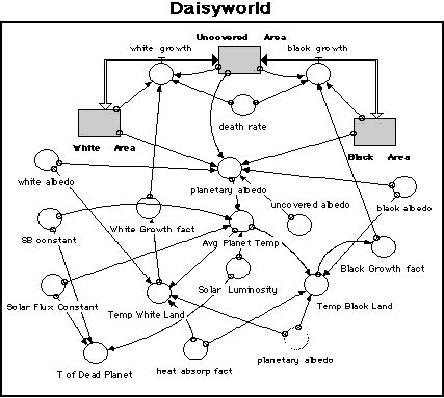
Figure 1: The complexities of Daisyworld (Modelling Daisyworld, Stella, D.)
In order to help us to understand how resources can be maintained, while also maintaining the environmental health of the planet, we need to learn how to acquire, collect, analyse and integrate information, as well as understand concepts such as scientific uncertainty and skills such as how to apply statistical analysis to test hypotheses.
The Internet as an information source
Although books (and, to a lesser degree, newspapers and magazines) have always been the students' information and knowledge source and continue to fill this role, the Internet is becoming increasingly important in this respect. The Internet provides a platform for communication, enabling collaboration with others, and it is also the world's biggest library, where sources of information are regularly updated, something which cannot be achieved with course books. Caution should be applied, however, as to the reliability of information obtained from the Internet. For this reason, students should apply the P.R.O.M.P.T. criteria (Table 1) as they browse the World Wide Web. (Activity 1.1, Part B)
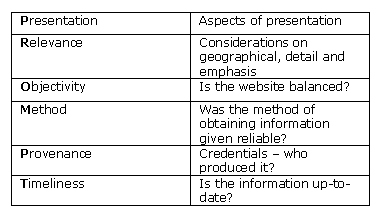
Table 1: The P.R.O.M.P.T. Criteria
By applying these criteria, it can be established whether the source is reliable and timely, or whether it is biased in favour of governmental, personal, business or NGO interests.
Knowledge, concepts and cycles
There are some very important concepts, both scientific and of a social science nature, which are vital to understand in order to create an adequate background. These include understandings of the mechanisms of climate change (including the carbon cycle), biospheres and trophic levels, uncertainty and feedback mechanisms, the influence of globalisation and the influence and role of governance ('bottom' to 'top', 'top' to 'bottom'), international treaties (for example, The Antarctic Treaty), sustainability, the hydrological cycle and, perhaps, some knowledge of geological factors.
For example, it is important to understand how the things we do in our everyday lives, influence the climate. At a basic level, we can think about what happens when we drive our cars or switch on our televisions. Our cars are powered by petrol, which derives from oil, which is a fossil fuel. (Book 3, Section 1.9) Likewise our television is likely to be powered by electricity derived from fossil fuels (oil, gas or coal). In releasing the fossilised carbon back to the atmosphere, we add carbon dioxide, which is a greenhouse gas, trapping heat in the atmosphere and thus warming the surface of the Earth. Things are not quite as simple as this though! We also need to understand feedback mechanisms and how they influence the climate, as in Daisyworld. For instance, ice has a high albedo and will reflect sunlight back, thus further cooling the Earth and creating more ice: a positive feedback. Forested lands absorb sunlight , thus warming the Earth (and melting ice!). (Book 3, Section 2.2) Clouds both reflect and absorb solar energy; both positive and negative feedback, while water vapour itself is a greenhouse gas. (Book 3, Section 2.4) This creates uncertainties and makes climate scientists' future forecasts quite a nightmare!
As with the carbon cycle, the hydrological cycle (Figure 2) has its complications. It is often difficult to comprehend that our supply of water is finite - in that what we have is all we have - a precious source which we share and which requires very careful handling, and which is greatly influenced by both globalisation and by governance. (Book 4, Section 1.4.1)
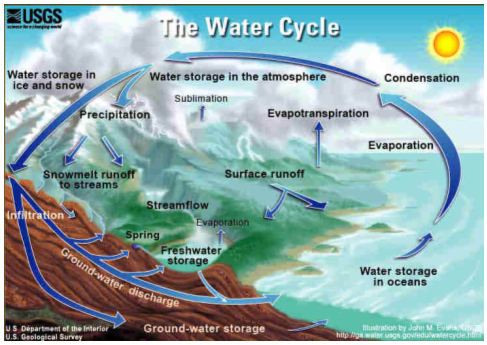
Figure 2: The Hydrological (or Water) Cycle (USGS 2005)
We also need to understand the interdependencies of biodiversity - and how threats to the habitat of one species will threaten the sustainability of another, higher or further along the food-chain. For example, although the whaling ban has been good for the whale, it hasn't necessarily been good for all species! It seems that Orcas (Orcinus orca), which once took their fill from the carcases of harpooned whales, have had to look elsewhere, and populations of otters and seals are now in jeopardy. (New Scientist, 2005)
Additionally, knowledge on species diversity and hotspots and GAP analysis as aids to protection of biodiversity, along with understanding of the mechanisms of Biodiversity Action Plans, would be useful. (Book 2, Chapter 5 and Activity 2.4).
Specific skills for specific tasks
Whilst forecasting future planetary climate is fraught with difficulties and uncertainties, such as the feedback mechanisms mentioned earlier, they are made easier by the use of climate models. Various scenarios can be programmed into these models, and by using different parameters, such as climate sensitivity, reasonable forecasts can be made, not only to likely future temperatures, but also to other variables, such as sea-level.
An example, (Figure 3 overleaf), shows how by programming into a Java Climate Model (U316 Block 3 Climate Models CD-ROM), a climate sensitivity (that is, an estimate of likely increases in GMST, associated and in equilibrium with, a doubling of atmospheric CO2) of 3.0 C, a baseline year of 1950 and with a stabilisation of CO2, we can forecast that in 2150, temperatures will have risen by 1.628 C and sea-levels risen by 0.27m - although some uncertainty must be taken into consideration.
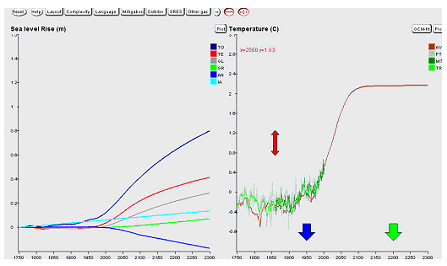
Figure 3: Java Climate Model (U316 Block 3, Climate Models CD-ROM)
More complicated models, such as the FAIR Climate Policy Decision Support Tool, allow us to see how different policy decisions can affect the future climate, as well as the wealth of individual nations. (U316 Block 3, Climate Models CD-ROM)
Plotting data onto graphs and statistical testing for hypotheses are also important skills to learn. Graphs can be useful for a variety of purposes, including plotting of data on species numbers against various parameters. They can also be used to perform statistical tests, such as regression analysis to test, for example, the hypothesis that species become more abundant with more sunlight (the species-energy hypothesis, Book 2 Section 4.4.6). Knowledge and skill on how to undertake biodiversity species surveys, are also important in this respect: identification, including biological keys; collection of data; analysis of data. (Block 2, Sections 4.4.1 and 4.4.2 and CD-ROM)
There are many claims, particularly on websites, for sustainable development. But how do we define this? Another important skill involves creating criteria (preferably collaborating as a group), on which sustainability can be measured, and analysing claims on this basis. An example, carried out as part of the U316 coursework, using claims of sustainability for shade-grown coffee and strict criteria, found that such claims are very difficult to substantiate and therefore should be treated with caution. (Foot, 2005),
Putting it all together
Combining all the knowledge, skills and concepts we have learnt, together, is often a difficult task, filled with complexities and uncertainties. Perhaps a sensible approach might be to use another important skill to help us organise our understanding; that is systems maps. (Block 4, Systems Diagramming) As an example, we might draw an influence diagram to illustrate the main factors influencing the demise of the Atlantic cod (Gadus morhua). Pulling together data, knowledge and concepts, (Book 1, Box 3.1; Kurlansky, 1999) over-fishing is an obvious culprit, though global warming might have a strong influence (New Scientist, 2005), and Canadian politicians are even blaming harp seals (Phoca groenlandica) for the failure of cod to recover off the Newfoundland coast (Greenpeace, 2005). We can even add 'consequences' to our diagram and a simple representation is illustrated in Figure 4.
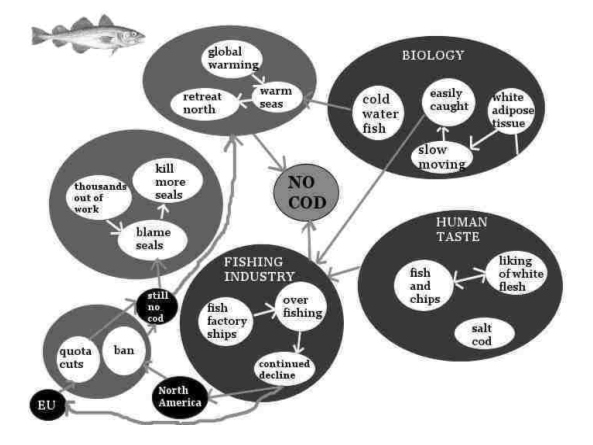
Figure 4: Influence (and consequence) diagram for the demise of the Atlantic cod
We might not gain answers from this approach, but it enables us to gather together our knowledge in order to see the problem as an accumulation of cause and effect.
Conclusion
The Aral Sea, between Uzbekistan and Kazakhstan, is disappearing (World Resources, p64; Welsh, 2000). It was once the 4th largest inland sea on the planet, but it is now mainly desert, filled with salt. The former Soviet Government diverted a dam to create huge plantations of non-native cotton. The result was a rise in the water table, taking the salt which was in the soils, into the water. Drinking water has been heavily polluted by salt, pesticides and fertilizers, and disease is rife, with infant mortality 30% higher than the norm. The once prosperous fishing industry is also ruined, along with livelihoods. Attempts are now being made to change farming methods and slow the rate of shrinkage, but an ecological and human tragedy has already happened. Here we find an example of how sustainability of our most important resource (water) can be destroyed because of bad governance and demonstrates the nature of interdependence and the fragility of our life-support systems.
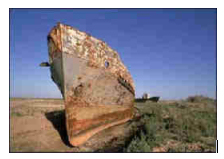
Figure 5: Fishing boat grounded, Aral Sea (Lakenet online)
The interrelationships of our planetary systems are complicated, but we must be able to understand them before we can understand how to balance our requirements with the needs of the Earth system and all of its inhabitants. Without this knowledge and without acting upon that knowledge, we cannot hope for sustainable development and are doomed to lose the rich biodiversity of the planet, which is a vital determinant factor in not only the quality of human life, but in the quality of life for our planet and every species upon it. Towards these ends, education is of vital importance.
Examples of the types of knowledge, concepts and skills taught in U316, and which university graduates would need to acquire in order to gain understanding, are summarised in Table 2.

Table 2: Skills, concepts and knowledge summary
--------------------------------------------------------------------------------------
Humankind has not woven the web of life.
We are but one thread within it.
Whatever we do to the web, we do to ourselves.
All things are bound together.
All things connect.
Chief Seattle, Suquamish tribe, 1854
--------------------------------------------------------------------------------------
References
Chief Seattle (1854) quoted on Native American Wisdom, Inspirations [online] Available from: http://www.sapphyr.net/natam/index.htm [last accessed 14 September 2005]Daisyworld 1996, video recording, Open University, Milton Keynes (part of course S269: Earth and Life). Also (but nothing to do with the Open University) available as Flash animation [online] http://library.thinkquest.org/C003763/flash/gaia1.htm [last accessed 14 September 2005]
Foot, F.J. (2005) How green in your latte [online] http://www.braininajamjar.co.uk/coffee1.html [last accessed 14 September 2005] This is a reproduction of my answer to Activity 2.3.
Greenpeace (24 February 2005), No cod? Blame the seals! [online] Available from: http://www.greenpeace.org/international/news/no-cod-blame-the-seals [last accessed 14 September 2005]
Kurlansky, M. (1999) Cod: A biography of the fish that changed the world. Vintage, London.
LakeNet Lake Profile: Aral Sea [online] Available from: http://www.worldlakes.org/lakedetails.asp?lakeid=9219 [last accessed 14 September 2005]
Lovelock, J. (1979) Gaia: A New Look at Life on Earth Oxford Paperbacks, Oxford, England (Also summary [online] Available from: http://www.gaiacooperative.org/theory.htm [last accessed 14 September 2005])
New Scientist (21 May 2005) Fish on the move as North Sea hots up [online] Available from: http://www.newscientist.com/channel/earth/mg18625006.500 [last accessed 14 September 2005]
New Scientist (6 August 2005) How whaling ban made life hard for hungry orcas, New Scientist 187 (2511), 17. Also [online] Available from: http://www.newscientist.com/channel/earth/mg18725114.300 [last accessed 14 September 2005]
Stella, D. Modelling Daisyworld [online] http://www.acad.carleton.edu/curricular/GEOL/DaveSTELLA/Daisyworld/daisyworld_model.htm [last accessed 14 September 2005]
U316 The Environmental Web, CD-ROM Guide, Version1, 2003, Block , Climate Models, The Open University, Milton Keynes. Activity 2.6, "A guide to using biological keys"
U316 The Environmental Web, CD-ROM Guide, Version1, 2003, Block 3, Climate Models, The Open University, Milton Keynes. JAVA Climate Model, courtesy of Ben Matthews and ChooseClimate.org. FAIR Model, developed by Michel den Elzen, Marcel Berk and Bert Metz, and courtesy of
RIVM-MNV International.
U316 Book 1, Environmental Changes: Global Challenges, Activity 1.1, Part B, "Evaluating Websites"; Box 3.1, "Alternative stable states: has cod had its chips"
U316 Book 2, Biodiversity and Ecosystems, Section 4.4.1, "Species surveys"; Section 4.4.2, "Collecting and analysing biodiversity data"; Section 4.4.6, "Testing the species-energy hypothesis using regression"; Chapter 5, "Action plans"; Activity 2.4, "Approaches to biodiversity protection".
U316 Book 3, Climate Change: From Science to Sustainability, Section 1.9, "How does driving a car make the sea-level rise?"; Section 2.2 "The Earth's complex climate system"; Section 2.4 "Uncertainties in our understanding of radiative forcing"
U316 Book 4, Sustainability and Water Management, Section 1.4.1 "The hydrological cycle: physical inter-dependencies"; Systems Diagramming (Block 4 Activities)
US Geological Survey (last updated Aug 26, 2005), Diagram of the Water Cycle [online] Available from: http://ga.water.usgs.gov/edu/watercyclehi.html [last accessed 14 September 2005]
Welsh, P. BBC News (16 March 2000) The Aral Sea Tragedy [online] Available from: http://news.bbc.co.uk/1/hi/world/asia-pacific/678898.stm [last accessed 14 September 2005]
World Commission on Environment and Development (1987), as quoted on UNESCO Education for Sustainable Development [online] Available from: http://portal.unesco.org/education/en/ev.php-URL_ID=23279&URL_DO=DO_TOPIC&URL_SECTION=201.html [last accessed 14 September 2005]
World Resources Institute (2000) World Resources 2000-2001. People &
Ecosystems The Fraying Web of Life. World Resources Institute,
Washington, p64.
World Summit on Sustainable Development (2002) Johannesburg Summit 2002 (summary) [online] Available from: http://www.un.org/events/wssd/summaries/envdevj10.htm [last accessed 14 September 2005]